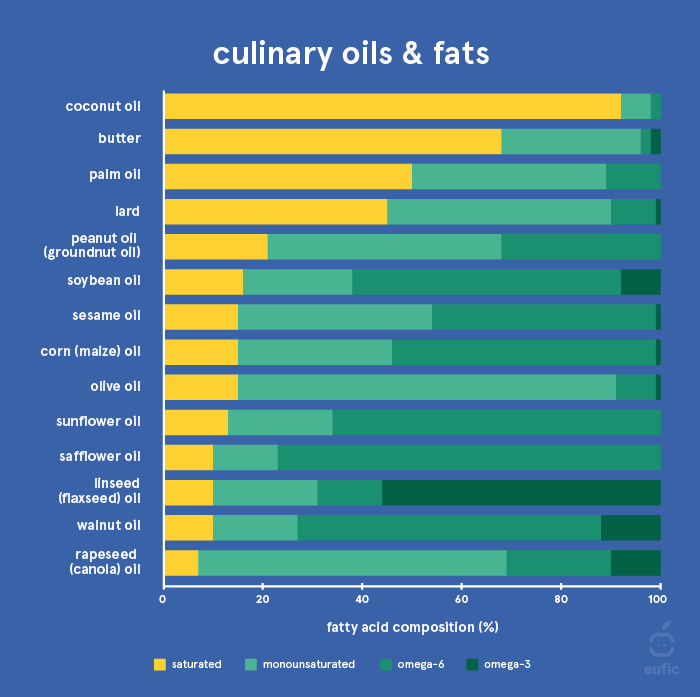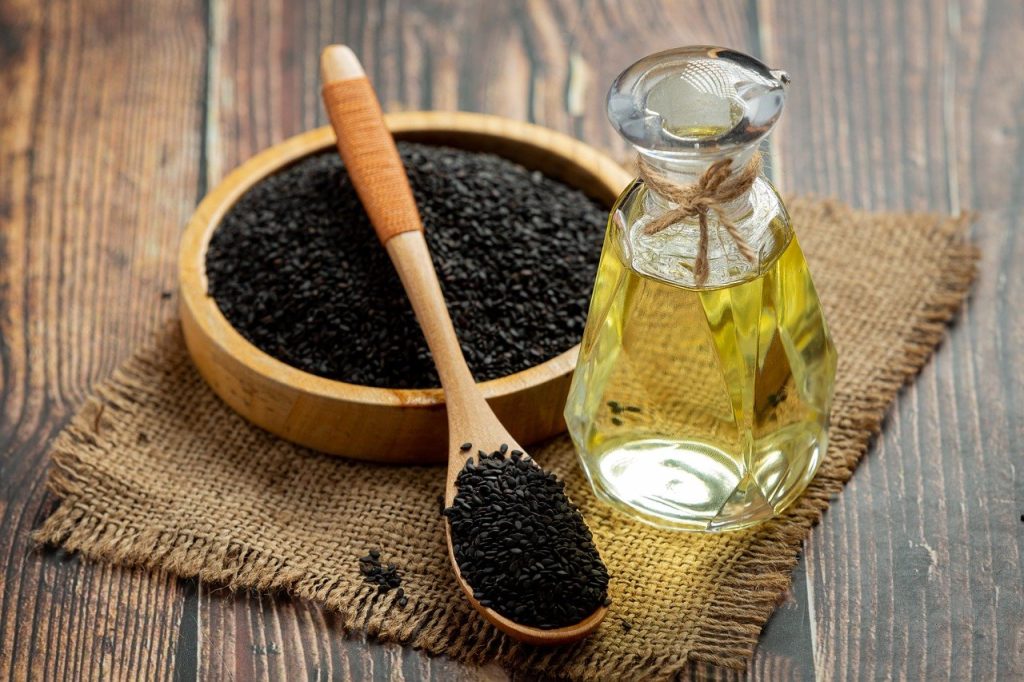Dietary fats are usually triglycerides made up of 3 fatty acids linked to a glycerol backbone. Fatty acids are like building blocks of fat just like amino acids are the building blocks of protein.
Fats are an important part of a healthy diet and serve an array of functions such as regulating hormones, regulating body temperature, and providing a storage form of energy and so on. Other than that, fats also provide texture and taste to a food. Fat enhances the mouthfeel of any food consumed as you might have noticed.

Dietary fats are commonly categorized into three types including saturated, unsaturated and trans fat.
Saturated Fats
Fatty acids that have no carbon-carbon double bonds are known as saturated fats. Saturated fats are usually solid at room temperature due to the straight structure of their triglyceride molecules, which allows them to pack closely together. The longer the chain of saturated fatty acids, the greater the likelihood that the fat will be solid at room temperature. Foods that are high in saturated fats include full fat dairy products such as cheese, ghee, butter, full fat cream, fatty meat, coconut oil, palm oil etc.
Unsaturated Fats
Unsaturated fats contain at least one double bond in its fatty acid chain resulting in a bent structure. This prevents them from packing tightly together, resulting in food items rich in unsaturated fats, like cooking oils, being liquid at room temperature. There are two types of unsaturated fats i.e. monounsaturated fatty acids and polyunsaturated fatty acids.
Monounsaturated Fats (MUFA)
If there is only one double bond in its fatty acid chain, it’s called monounsaturated fat. Key sources include almonds, walnuts, avocados, and especially olive oil. The primary monounsaturated fatty acid found in the diet is oleic acid. Canola, mustard and olive oils are examples of vegetable oils rich in MUFAs.
Polyunsaturated fats (PUFA)
Polyunsaturated fatty acids (PUFAs) have multiple carbon double bonds. The main types in our diet are omega-3 and omega-6 fatty acids. Plant sources of Omega-3s are flaxseed, chia seeds, nuts, and certain oils. Animal sources include cold-water fatty fish like salmon, herring, and mackerel etc.
The figure below shows the fatty acid composition of different oils and fats. The infographic also makes it clear that all foods containing fat have a mix of specific types of fats.

Trans Fat
Trans fatty acids are unsaturated fatty acids characterized by one or more unconjugated double bonds in the trans configuration. Even though they are technically unsaturated fats, they are not categorized as such. Trans fats, commonly found in processed foods like fried and baked goods, are typically added for taste, texture, and preservation. About 90% of trans fat is formed during hydrogenation, a process that solidifies liquid oils into fats, often used in products like margarine. The trans fatty acids content in partially hydrogenated vegetable oils can be as high as 60%. Small amounts of trans fatty acids are naturally present in beef fat and dairy fat.
So which fats are healthiest?
Saturated Fat: Saturated fat is not bad in itself. Just like any other food, dose matters. Many health promoting foods have saturated fats in them. Experts recommend not more than 10% of your total calories should come from saturated fat. Most researchers conclude that cutting down on saturated fat reduces risk of cardiovascular diseases.
However, when you cut down on saturated fats, what you replace it with matters. If you replace saturated fats with processed carbohydrates or trans fat, there are no benefits or reduction in risk of cardiovascular diseases. However, if you replace it with whole grains, the benefits outweigh! Replacing saturated fats with polyunsaturated fats is also beneficial.
Trans Fat: Experts recommend avoiding trans fat as far as possible. Trans fats have been shown, through multiple research, to cause a rise in bad (LDL) cholesterol and a decrease in good (HDL) cholesterol. Consuming trans fats raises the risk of heart attacks and strokes. Moreover, it’s linked to an increased risk of type 2 diabetes.
Unsaturated Fats: Unsaturated fats remain the healthiest types of fat. Most of the unsaturated fats are commonly present in plant-based foods like vegetable oils, nuts, and seeds.
Take away
- Fats are essential nutrients and are healthy in moderation.
- Saturated fats should be around 10% of your total calories. Most animal based products are high in saturated fats. Among plant based ones, coconut and palm oils contain more.
- Unsaturated fats are most health promoting the sources of which are nuts and seeds, avocado, olive oil, canola oil and most other plant oils.
- Trans fats should be avoided or limited as far as possible. They are mostly found in heavily processed foods like cakes, margarines etc.
References
https://pubmed.ncbi.nlm.nih.gov/26068959/
https://pubmed.ncbi.nlm.nih.gov/32307197/
https://www.eufic.org/en/whats-in-food/article/8-facts-on-fats
https://jamanetwork.com/journals/jamainternalmedicine/fullarticle/2530902
https://www.heart.org/en/healthy-living/healthy-eating/eat-smart/fats/trans-fathttps://genesandnutrition.biomedcentral.com/articles/10.1186/s12263-017-0580-4#:~:text=Conclusion,in%20overweight%20and%20obese%20subjects.










